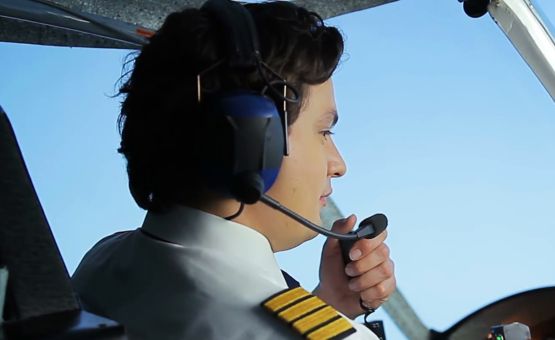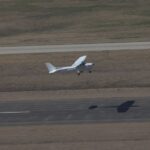The most common reason for problems on an IFR departure is the same as for any other phase of an IFR flight, and it’s not one that keeps you from getting a commercial pilots license: mental disorganization. One contributing factor to mental disorganization is that the pilot doesn’t know what to anticipate in the way of information and actions from each of the controllers. Although at this point we are talking about planning for the departure, it is an opportune time to review the entire sequence of controllers. Being able to anticipate what the controllers need and what they may say or do contributes a great deal to mental organization.
When an ATC clearance is received and accepted it is very much like entering into a legal contract; both parties have legal obligations that must be accomplished in order to fulfill the terms of the contract. Most pilots who obtain their commercial pilots license know what their obligations are but are not sure what each of the controllers is. Without this knowledge, instructions issued by the controllers can catch pilots unprepared and create disorganization.
Starting at the top, some airports have a pre-taxi clearance delivery. Pilots should call this frequency not more than ten minutes before the proposed taxi time. The IFR clearance is usually also issued at this time. When ready to taxi, ground control is contacted and normally the pilot need not tell him that he has his IFR clearance. However, at certain locations, he may be required to tell the ground of the first portion of his routing.
For our purpose we will start out with ground control. Ground control has two responsibilities: to issue the taxi clearance and to obtain and relay the IFR clearance. In large terminal areas, there is a computer terminal in the tower and if the pilot has filed early enough, the flight strip is automatically kicked out 15 minutes prior to the proposed departure time. Thus, when the pilot makes his initial call-up, the clearance is ready and the pilot can copy it at that time or when he reaches the runway. At airports without full equipment, the clearance must be placed “on request.” This is why the pilot, on initial call-up, should indicate that he is IFR and include the destination airport. In this way, ground control knows that he must contact the proper ATC facility for clearance.
Incidentally when ground control says, “clearance on request” he doesn’t mean the pilot can have it on request. He means that he is placing it on request. The next controller is the tower and he too has two obligations. Not only must he issue takeoff clearance but he must also issue some sort of initial instructions.
In a radar environment, these may be very simple such as “cleared for takeoff, turn left to 270.” In a non-radar environment, they may be very complex because sometimes they have to pull something “off the wall.”
The next controller is departure control. His job is to get the pilot out of the terminal area and established in the enroute structure at the proper point in space and altitude. This is not a random operation. The next controller is expecting the flight at a certain point and has reserved airspace for it. Departure accomplishes this with radar if he has it or with oral instructions or departure procedures if he doesn’t.
At the proper point, the flight is turned over to the center who is then responsible for separation enroute. This separation is accomplished with radar if available or on the basis of assigned altitudes and pilot reports if not.
Up to here, since they’ve gone through everything necessary to get their commercial pilots license, most pilots have little or no trouble, but it is at this point in the flight where a lot of them fall apart. The obligations of the approach controller are again twofold. First he must issue approach information. The first data the pilot needs is what approach is in progress. Next he needs the runway in use so he can determine the MDA or DH. Now he needs to know the weather to determine if he has minimums and also to compute his ground-speed on final. He also needs the current altimeter. The approach’s next obligation is to tell the pilot what method is to be used to enter the corridor.
After approach comes to the tower. He issues landing clearance and also cancels the IFR flight plan. Ground control takes the pilot to the ramp. Now notice that none of these obligations are dispensable. Everyone must be accomplished during any IFR flight. And yet we all know that each and every one of these controllers is not encountered on every IFR flight. Let us use what we have to anticipate the future course of our IFR flights.










